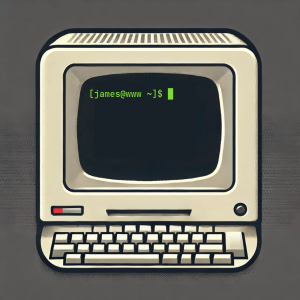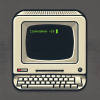Table of Contents
- What DOES Work on Linux
- Not Everything Works on Linux
- Adobe Software Doesn’t Work on Linux
- DaVinci Resolve Can’t Handle H.264 or AAC
- 40% of Anti-Cheat Games Don’t Work
- Visual Novel DRM Usually Doesn’t Work
- Blu-Rays Don’t Work…Technically.
- Microsoft Office Kind-of Works
- HDR and Color Management Support is In-Progress
- Some Hardware Doesn’t Work Out-of-The-Box or Needs Third-Party Software
- HDMI 2.1+ Cannot Be Supported on AMD GPUs
- Will It Always Be This Way?
What DOES Work on Linux
Linux works great for a lot of things…but not everything. Web browsers like Google Chrome, Mozilla Firefox, Microsoft Edge, and Ladybird work the same way they do on macOS and Windows. You can watch Netflix and YouTube, use Google Docs, do your internet banking, and all of the other increasing amount of stuff you can do on the web.
If you’re a developer, Linux is a great choice for working with almost any programming environment. You can also play a lot of games with nearly equivalent performance and stability to Windows. Valve makes sure you have a good experience with over 14,000 of the games available on Steam, from Triple-A games to indie games, and the number continues to increase daily.
If you want an office suite, you can try LibreOffice, you can use Blender for 3D work (or Maya, Houdini, Nuke, etc.; most VFX software is available on Linux), Krita if you’re an artist, Audacity for audio editing, Ardour or Reaper for music production, and Inkscape if you’re working with vector-based images. Presonus recently released a Linux version of their Studio One software for music production, too. If you edit videos, you can use Kdenlive or DaVinci Resolve.
If you use a Focusrite audio interface, there’s a graphical program for configuring it.
You can make games with Godot, use Anki for learning a language, use Evolution for managing your Microsoft Exchange mailbox, read your ebooks with Calibre, manage your ToDo lists with TickTick, virtualise operating systems with Virtualbox or GNOME Boxes, and livestream with OBS Studio.
There is plenty you can do on Linux. There are programs for almost everything you can think of, and plenty you haven’t thought of.
The issue is, these programs may not have a specific feature you want or you simply need a very particular program that is not available on Linux.
The reality is…
Not Everything Works on Linux
This article documents exactly what the issues are for those wanting to use Linux, or new Linux users who are still finding their way around. This is a list of important features and software—mainly important to me—that don’t work on Linux, either fully or only partially, alternatives, and current progress.
This is not an exhaustive list. For example, I have not tested AutoCAD even though I have heard it does not work because I do not use CAD software. The list is in descending order of importance.
Adobe Software Doesn’t Work on Linux
This means Photoshop, Illustrator, Premiere Pro, After Effects, inDesign, Acrobat Pro, and Lightroom don’t work on Linux. I really need to use After Effects, and there is no replacement for it, so I use it on macOS.
It’s possible to access some of this software on the web:
- photoshop.adobe.com
- lightroom.adobe.com
- preview.illustrator.adobe.com (Still in Beta)
- acrobat.adobe.com
Most of the features you need to use are available. However, Photoshop Web can’t handle files that are really large currently, which will prevent you from performing some actions, such as cropping. I haven’t extensively tested any other web app from Adobe, but they likely work fine with some limitations.
Unfortunately, neither After Effects nor inDesign are available on the web yet. inDesign might make it to the web one day, but I doubt After Effects will.
If you’re looking for native Linux alternatives, try GIMP for Photoshop, Darktable for Lightroom, Inkscape for Illustrator, Master PDF or Stirling PDF for Acrobat, Scribus for inDesign, and maybe Natron for After Effects.
Some of these work really well, but some of them may not have the features you need, like in my case. If you just need good alternatives to Photoshop, Illustrator, and inDesign, here’s a project for you:
Get Affinity’s Creative Suite working on Linux through Wine. Several users have succeeded, and the programs seem to perform well enough to get work done.
Check out the community guide.
DaVinci Resolve Can’t Handle H.264 or AAC
DaVinci Resolve does work on Linux, but due to legal reasons, it does not handle H.264 or AAC media and does not even produce an error when you try to import it. These codecs are found in the mp4 container, which many users work with. You will need to transcode your footage to another set of codecs if you want to work with it in DaVinci Resolve.
See my other post for more information.
40% of Anti-Cheat Games Don’t Work
According to areweanticheatyet.com, a crowd-sourced Linux compatibility list of games with anti-cheat, 47% of games are supported, 12% are running but require tinkering, another 1% of developers are planning to support Linux, and the last 40% do not currently work (6% of these developers have made an official statement refusing to support Linux).
So, if you play games with friends, there’s a 60-40 chance you can’t play that game. CS:GO works fine on Linux, as does Halo: MCC, Halo Infinite, and Apex Legends. I play Rainbow Six: Siege, which has not enabled support for Linux. The game works fine in Linux, and both the FairFight and BattlEye anti-cheat systems support Linux, but Ubisoft has yet to enable this support for the game and it's unclear whether they ever will.
Fortnite has also refused to support Linux, although their Easy Anti-Cheat software supports Linux and many other developers, like Microsoft’s 343 Industries, have enabled support in their games.
The majority of Anti-Cheat software supports Linux, but not all developers enable it. If they did, the amount of Anti-Cheat games supporting Linux would likely be more than 80%. This situation might change in the future, but that depends on a multitude of factors, like the Steam Deck penetrating much more of the market.
Visual Novel DRM Usually Doesn’t Work
While many visual novels work on Linux through Wine or even natively, those encumbered by DRM do not work in Wine. There are thousands, if not tens of thousands of DRM-free visual novels you can buy that will likely work on Linux. However, if the visual novel you want isn’t available without DRM (e.g. Flyable Heart), you’re out of luck.
This only really matters if you play visual novels in Japanese, like me. If you can’t understand Japanese and only play visual novels in English, you can probably play almost 100% of the visual novels you want to play. If it’s on Steam, it almost certainly works.
But if you play in Japanese and buy your games from DMM, there is almost no chance that it works, because almost every DMM game is encumbered with DRM that does not work on Linux. The only DRM that works on Linux is DLsite’s PlayDRM, which hundreds of games do use.
Most visual novels with DRM that doesn’t work on Linux will work perfectly fine inside of a virtual machine, though. See my Virt-Manager Guide for that.
See VNDB’s DRM stats for an idea of how many visual novels are compatible with Linux (it’s a lot!). The site is also really useful for finding out ahead of time if a game has DRM. Please contribute if you find information about a visual novel you own is not present on the database yet, as this feature is still relatively new.
Blu-Rays Don’t Work…Technically.
DVDs and Blu-Ray discs are encrypted. You need both a physical player and a specialised software player to decrypt the discs so they can be played. No one makes a software player for Linux, so technically, Blu-Ray discs don’t work.
libdvdcss is a library used to decrypt DVDs in software players like VLC and mpv. As far as I know, it is legal to use this library to play your own discs on Linux, so DVDs are playable.
For Blu-Ray discs, there are…options. I don’t know the legality of the solutions, but my understanding is they work quite well. There are some wiki pages out there that might have more information on that front.
Microsoft Office Kind-of Works
If you use CrossOver, Microsoft Office will work fine for the most part on Linux. It’s a little prone to crashing and there may be a few graphical glitches here and there, but it’s workable. It’s probably not something you’d want to spend the whole day with.
You can try the web versions, which have reduced functionality, as an alternative.
I have very little use for Microsoft Office. LibreOffice works fine for me in most cases.
HDR and Color Management Support is In-Progress
Colour Management is not currently supported on Wayland at the moment. On Xorg, it works (kind of). HDR doesn’t work on Xorg, but KDE Plasma 6 has a limited implementation of HDR support with more progress to come soon, hopefully.
Quite a lot of stakeholders—including AMD, KDE, GNOME, wlroots, and Valve—have worked on the colour management protocol over the past four years for Wayland: https://gitlab.freedesktop.org/wayland/wayland-protocols/-/merge_requests/14
As of a month ago, the protocol has been deemed “ready to experiment with”:
Created a branch which has all interfaces renamed with an xx prefix instead of wp. This branch is supposed to be reasonable stable to experiment with. Compositors and clients wanting to try out the color management protocol should use this. This variant of the protocol will go away from compositors! Compositors should hide support for this protocol behind some kind of flag to prevent this protocol variant from becoming widespread.
One of the main contributors to this protocol explains why it has taken so long to come to fruition:
If you are criticizing that this is taking an awful lot of time, then yes, it’s an awful lot of work. Many of us needed to learn these things from scratch, and the said compositor infrastructure in everyone’s favorite compositor takes a huge amount of effort too. I’m also worried that it is easy to design a protocol that does not extend beyond the initial use cases, and then we’d have to start again with a new alternative extension.
Weston (the reference compositor for Wayland) recently landed support for most of the colour management protocol, so it seems close to being finalised. After that, compositors like Mutter for GNOME and KWin for KDE will need to implement support for it, which will take some time.
However, that won't be the end of it. Calibration/Profiling tools like DisplayCAL and argyllcms are used with colorimeters to ensure monitors are displaying color accurately. A portal (which has not been proposed yet) is required for these tools to be able to calibrate the monitor on Wayland and hand the ICC profile over to the compositor as discussed here. Relevant DisplayCAL issue here: https://github.com/eoyilmaz/displaycal-py3/issues/133
Some Hardware Doesn’t Work Out-of-The-Box or Needs Third-Party Software
While it’s rare, hardware sometimes does not work on Linux without intervention or needs third-party software to operate. Elgato’s Stream Deck, for example. Try Boatswain for the Stream Deck. It’s not the official software, but it hopefully works as an effective substitute.
Printers are the most common problem category. Your printer may work completely out of the box with no intervention needed from you, or you might need to download a driver from the manufacturer. In my case, I needed to install a driver and setup CUPS. The nice thing about printer drivers is that they are a lot easier to “install” than kernel drivers.
The only device I had a bad experience with was a USB NIC I bought when my laptop’s NIC stopped working. I needed to compile a driver for it, and then it worked fine.
It’s best to check whether your hardware works on Linux before purchasing it. If you already have non-functional hardware, that’s not what you want to hear. I don’t know of any hardware that flat-out doesn’t work at all, with no third-party driver, but there is certainly hardware out there that offers a sub-optimal experience on Linux.
Wacom tablets work great on Linux, for instance. Other graphic tablets may lag in support.
HDMI 2.1+ Cannot Be Supported on AMD GPUs
HDMI rejected AMD’s request to support HDMI 2.1+ in their Linux drivers. This only impacts AMD; NVIDIA and Intel GPUs should not have any trouble with HDMI 2.1+ devices regardless of the drivers used.
Source: https://gitlab.freedesktop.org/drm/amd/-/issues/1417#note_2303163
Will It Always Be This Way?
I don't think so. Linux has momentum now. Wine is playing the biggest part in bringing more software to Linux, and I have hope that this might one day extend to Adobe software once more.
I'm a new Linux user, so I don't know what it was like, say, ten years ago. I've heard the desktop was far less functional just a few years ago; when I installed it in 2020, everything mostly just worked. The main issue I had was the lack of Adobe software and how different it was. Now I'm used to it, and I love it, but the lack of Adobe software is still an issue (but starting to lessen with photoshop.adobe.com and its brethren).
HDR and Color Management will be rolled out in the near future for Wayland. AMD will figure out the HDMI issue eventually. More hardware will play nicely on Linux in the future because the platform is getting more popular, not less. Maybe those pesky NICs not working on Linux without a third-party kernel module will be a thing of the past. Wine will continue to improve, and maybe one day, those improvements will result in more DRM systems like Soft-Denchi working, which will allow Linux users to play a lot more visual novels.
In a few more years, the last patents for H.264 will finally expire (maybe 2028?), and DaVinci Resolve will likely include encoding and decoding support for it in the free version of their software. The AAC issue will be around for longer, but not forever. Kdenlive will continue to improve as they work on more features from their roadmap, and it might become viable for more editors.
Microsoft Office might become more usable in Wine in the future. You may not need to use CrossOver anymore.
Adobe is bringing more of their software to the web. inDesign, for sure, I could see being on the web one day. I hope the web gets to the point where running After Effects is viable. Wine might make progress on supporting Creative Cloud and it's DRM, which is the largest missing piece to getting the desktop programs working on Linux properly for the first time in nearly two decades. That requires concerted effort and funding, and is generally not the domain of hobbyists, though.
There may one day be a Blu-Ray player for Linux, too.
And as for Anti-Cheat...well, the Steam Deck 2 might sell enough units to force the issue of enabling Proton support, but I won't hold my breath.


